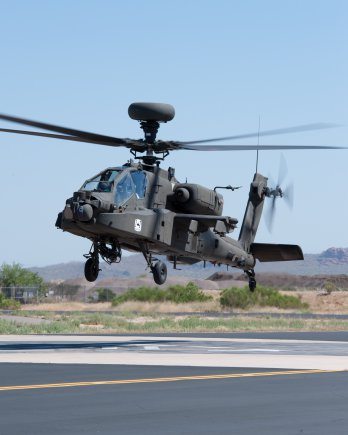A new study by Army researchers looks at inserting carbon nanotubes into the structural design of helicopter rotor blades to improve performance.
The U.S. Army Research, Development and Engineering Command’s research laboratory hopes this approach could lead to the design and fabrication of the next generation of rotor blades and fixed wings.
Bryan Glaz, Ph.D., Jaret Riddick, Ph.D., and Ed Habtour, research engineers from the U.S. Army Research Laboratory Vehicle Technology Directorate, lead this effort.
Glaz and a team of structural, mechanical and aerospace engineers are embedding carbon nanotubes inside the composite matrix, resin material throughout the blade, and in specific locations like near the hub, which he said “gives more bang for the buck.”
“Especially in conflicts like Afghanistan, it really highlighted the deficiencies of the DOD current fleet in terms of payload capacity, speeds in supporting the warfighter and a big thing for the Department of Defense was the maintenance and cost,” Glaz said. “They can’t be sitting in a maintenance bay because if they’re in a maintenance bay, they’re not out there supporting the warfighter.”
Rotor structural dynamics can be inherently unstable. Structural design and the aeromechanics of rotorcraft flight can limit forward flight and maneuver capabilities and potentially lead to catastrophic structural failures in takeoff and landing conditions.
There is a tradeoff between rotor blades designed to transmit low vibrations to the aircraft and blades designed for stability, Glaz said. Blades with good stability characteristics tend to transmit high vibratory loads to the aircraft, and the high vibratory loads of rotorcraft are a major source of maintenance, repair and logistics burden associated with the DOD vertical-lift fleet.
The reverse is also true — blade designs with to low vibration tend to have structural dynamic stability issues that tend to limit the performance of the aircraft. This trade-off prevents the development of next-generation radical design concepts with substantially improved payload, speed, range and cost.
“Our goal is to eliminate the trade-off,” Glaz said. “We would like to be able to design blades that transmit low loads yet still have good stability characteristics.”
With the carbon nanotubes inside and inherent to that structure, researchers expect to enhance energy dissipation through friction at the nanotube-matrix interface and improve damping.
“We believe this improvement in damping can be exploited to so drastically improve stability without adding weight or mechanical complexity that rotorcraft designs never considered possible may become reality,” Glaz said.
Army researchers turned to recent scientific publications that indicate that carbon nanotubes can effectively dissipate energy for small scale samples. They’re venturing into uncharted research territory by investigating how much of the energy dissipation mechanism can be achieved when the carbon nanotubes are used to damp dynamic modes of actual structures as opposed to small laboratory samples.
These components would be similar to existing structures in the sense that the composite structures would still consist of a matrix with fiber reinforcement.
“In our case though, the matrix would be completely different since it would have carbon nanotubes inserted throughout,” Glaz said. “The nanotube enhanced matrix would provide the damping while fibers would still be used for strength and stiffness of the structure.”
In the future, the next-generation fleet will carry greater payloads and fly unimagined speeds with very low maintenance considerations, researchers said.
ARMY RESEARCH LABORATORY
The Army Research Laboratory is part of the U.S. Army Research, Development and Engineering Command, or RDECOM, which has the mission to develop technology and engineering solutions for America’s Soldiers.
RDECOM is a major subordinate command of the U.S. Army Materiel Command. AMC is the Army’s premier provider of materiel readiness — technology, acquisition support, materiel development, logistics power projection, and sustainment — to the total force, across the spectrum of joint military operations. If a Soldier shoots it, drives it, flies it, wears it, eats it or communicates with it, AMC provides it.










